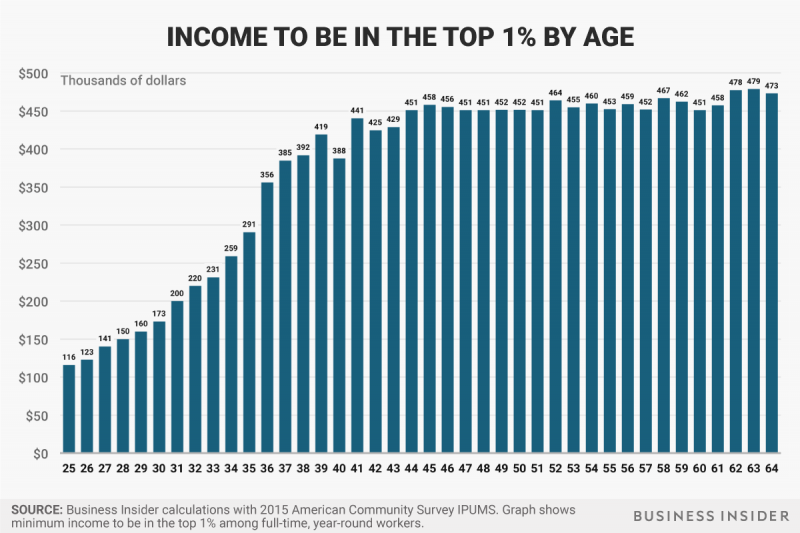A lot of people are overjoyed to cross the $100,000 threshold in annual income. And they should be – a six-figure salary is nothing to sneeze at.
But as income inequality in the US continues to worsen, a $100,000 salary creeps ever-closer to being an upper-middle-class income, not a sure sign of wealth.
In fact, according to a Business Insider analysis of US Census data, the $100,000 distinction isn’t enough to put anyone, at any age for which there is reliable data, in the top 1% of personal incomes.
Here is the full breakdown.

Business Insider analyzed data from the 2015 American Community Survey, an annual survey by the US Census Bureau that talks to 1% of all US households about various economic, social, and housing demographics.
Specifically, we used individual-level data from the Integrated Public Use Microdata Series, a project of the Minnesota Population Center at the University of Minnesota, which allowed us to estimate the cutoffs for being in the top 1% of earners among full-time, year-round workers for each age in 2015.
Ultimately, the data showed $116,000 at age 25 was the smallest six-figure salary you could have in order to be in the top 1% relative to your peers. But that number quickly jumps to $200,000 by the time you reach your 30s and $300,000 by the time you pass 35.
